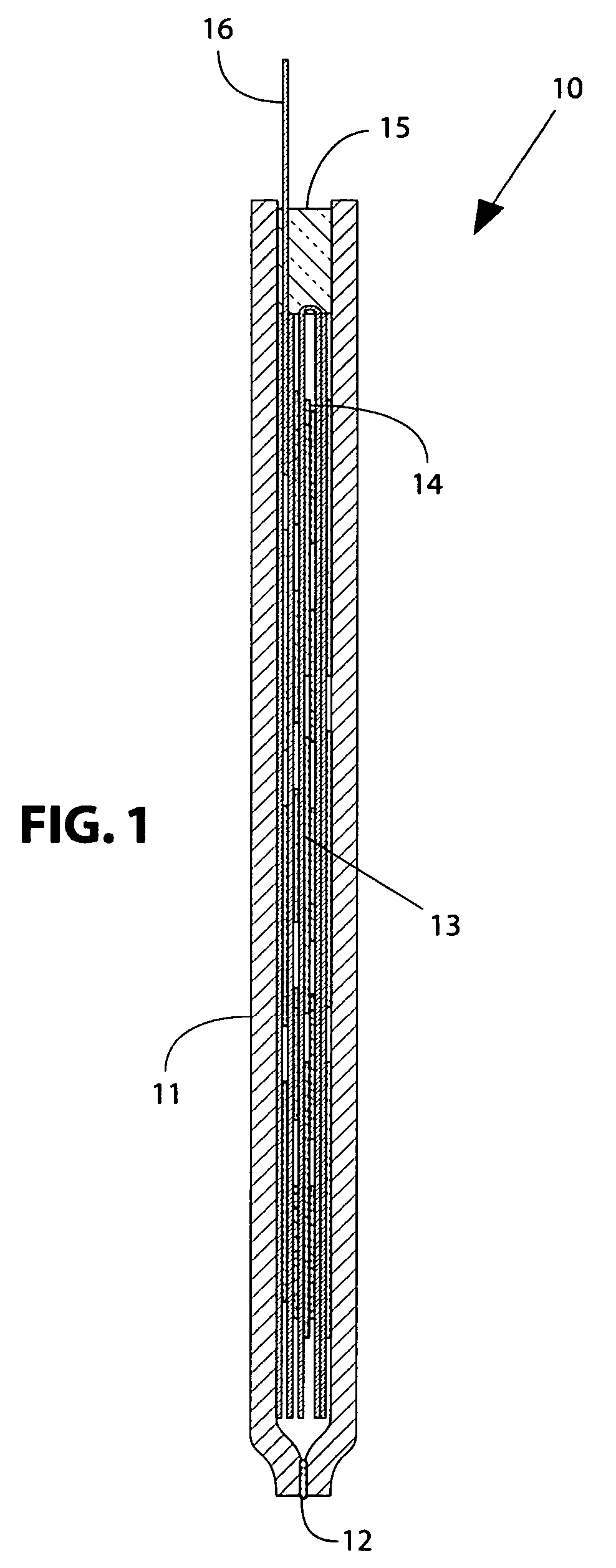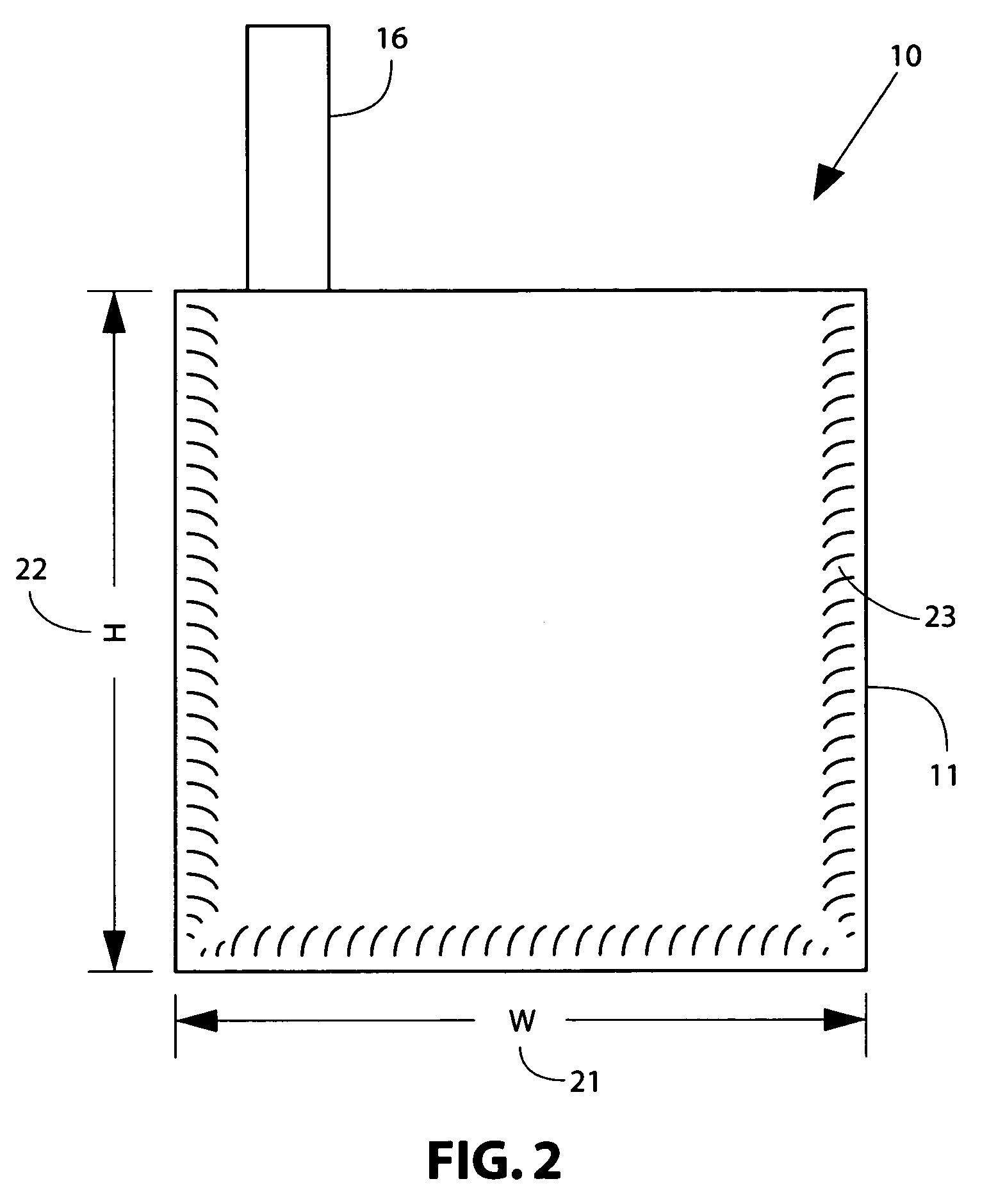Micro blade assembly
a technology of micro blades and components, applied in the direction of solid-state devices, semiconductor devices, basic electric elements, etc., can solve the problems of difficult heat dissipation of such miniaturized versions, achieve good heat dissipation characteristics for cooling, effectively distribute localized hot spots, and dissipate the same amount of power
- Summary
- Abstract
- Description
- Claims
- Application Information
AI Technical Summary
Benefits of technology
Problems solved by technology
Method used
Image
Examples
Embodiment Construction
[0021] The cross-section of FIG. 1 illustrates Micro Blade 10 of the current invention, at a scale of approximately 4×. Micro Blade 10 can be of any size, but preferably has a thin form factor for ease of cooling the active circuits inside. Copper jacket 11 is soldered, welded, or brazed at crimped edges 12 to form a hermetic package. Inside the copper jacket is an electronic assembly that is preferably a folded system in package (SIP) 13 including IC chips 14. At the top of Micro Blade 10 is a semi-hermetic seal 15 that also provides a strain relief for cable 16. Semi-hermetic seal 15 may be formed using an epoxy adhesive or a potting compound, as is known in the art. Cable 16 connects to electronic assembly 13 using a direct attachment (like flip chip), as will be further described. Cable 16 also includes a section that is hermetic, as will be further described.
[0022]FIG. 2 is a side view of Micro Blade 10, showing cable 16. Cable 16 typically carries power and high speed signals...
PUM
 Login to View More
Login to View More Abstract
Description
Claims
Application Information
 Login to View More
Login to View More - R&D
- Intellectual Property
- Life Sciences
- Materials
- Tech Scout
- Unparalleled Data Quality
- Higher Quality Content
- 60% Fewer Hallucinations
Browse by: Latest US Patents, China's latest patents, Technical Efficacy Thesaurus, Application Domain, Technology Topic, Popular Technical Reports.
© 2025 PatSnap. All rights reserved.Legal|Privacy policy|Modern Slavery Act Transparency Statement|Sitemap|About US| Contact US: help@patsnap.com



